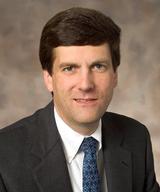In January 2006, the United States Patent and Trademark Office ("USPTO") proposed regulations that would effectively limit the ability of applicants to contest patent rejections and file continuation applications.The proposed regulations also limited the number of claims that would be examined in an application, unless accompanied by a cost prohibitive search document.The proposed rules further engrafted a number of rebuttable presumptions of unpatentability into the patent procurement process.
The proposed rules received the highest number of negative comments ever received by the USPTO.Companies large and small, and nearly every patent association, voiced outrage at the rules which would have a dramatic negative valuation impact on their patent estates and substantially increase prosecution costs.The greatest outcry came from biomedical companies that are often forced into continuation practice by examiners who frequently question the data upon which claims are based. The USPTO all but ignored the patent community's negative response and in July 2007 began sending out indications that it would implement the proposed rules in revised form.
Dr. Triantafyllos Tafas, the founder of a number of emerging companies, in fields including robotic microscopy and waste energy recovery, saw the new rules as an impediment to his ability to raise venture capital. Due to Dr. Tafas's concern that the proposed rules and any rule derived from them would seriously hamper his ability to raise venture capital, coupled with his firm belief that the proposed rules exceeded USPTO authority, he filed a lawsuit to stop imposition of the proposed or any derivative rules.
The USPTO published the final rules on August 21, 2007.Within 24 hours, Kelley Drye & Warren LLP, representing Dr. Tafas, filed a complaint, a motion for preliminary injunction, and a memorandum in support of the motion for preliminary injunction.
The final rules were even more draconian than those originally proposed and denounced by the patent community.Under the new rules, an applicant would have less opportunity to contest examiner rejections.The cost of appeal was also greatly increased.As the rules were retroactive, applicants who in the past could depend on their disclosures to seek, within 20 years, inventions disclosed but not originally claimed, suddenly found themselves having a limited opportunity to claim such inventions.Furthermore, the rules required expensive filings to be made to overcome new USPTO promulgated presumptions with respect to the patentability of certain applications.
Dr. Tafas's case ultimately consolidated within it a nearly identical case brought by GlaxoSmithKline ("GSK") nearly two months later.Together, Dr. Tafas and GSK made a "dream team" proffering a comprehensive view of both small and large companies that the rules were counterproductive to the advancement of the sciences.In an opinion of April 1, 2008, the Court adopted much of Dr. Tafas's reasoning contained in his original complaint and motion for preliminary injunction.First, the District Court found the USPTO's rulemaking exceeded its authority under 35 U.S.C. §2(b)(2) in that such rules were substantive in nature, in affecting individual rights and obligations, and inconsistent with the law.The Court also found the rules impermissibly shifted the initial burden of proof regarding patentability from the USPTO (i.e. establish unpatentability) to the applicant (i.e. establish patentability) concerning the requirement for an examination support document with respect to limiting continuing prosecution practice.The Court noted 35 U.S.C. §120 and the relevant case law clearly provide that there is no statutory basis for fixing a hard limit to the number of continuing applications.A hard limit was found in that the USPTO indicated that in almost all circumstances a petition to file a continuation application would be denied.While no case law existed with respect to the interpretation of 35 U.S.C. §132, the Court argued that the use of the word "shall" and the phrase "at the request of the applicant" in section (b) clearly indicate that Congress intended to allow applicants an unlimited number of requests for continued examinations (RCEs).
The USPTO recently filed a notice of appeal of the decision.Some suggest that the USPTO fears the decision may seriously undermine many of the regulations it promulgated in the past, and seriously limit its ability to pass regulations in the future.
Published June 1, 2008.


